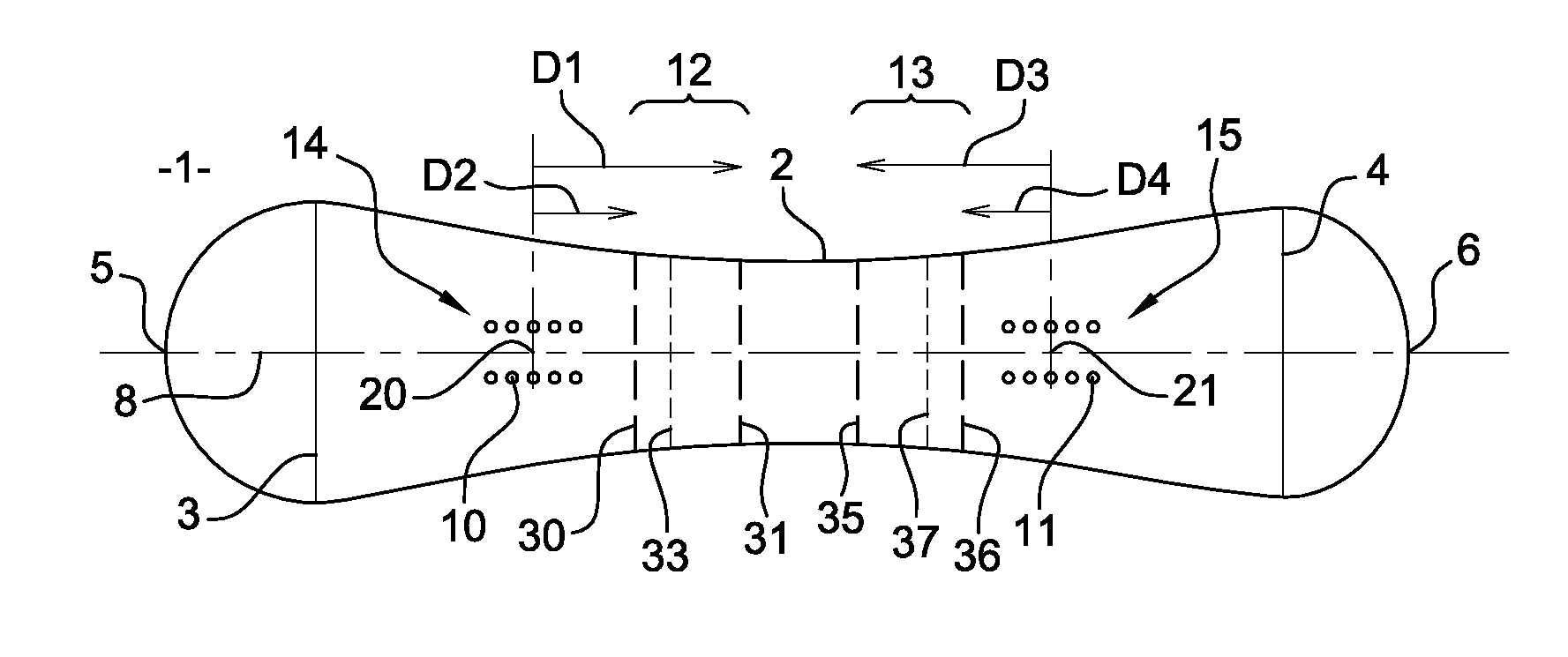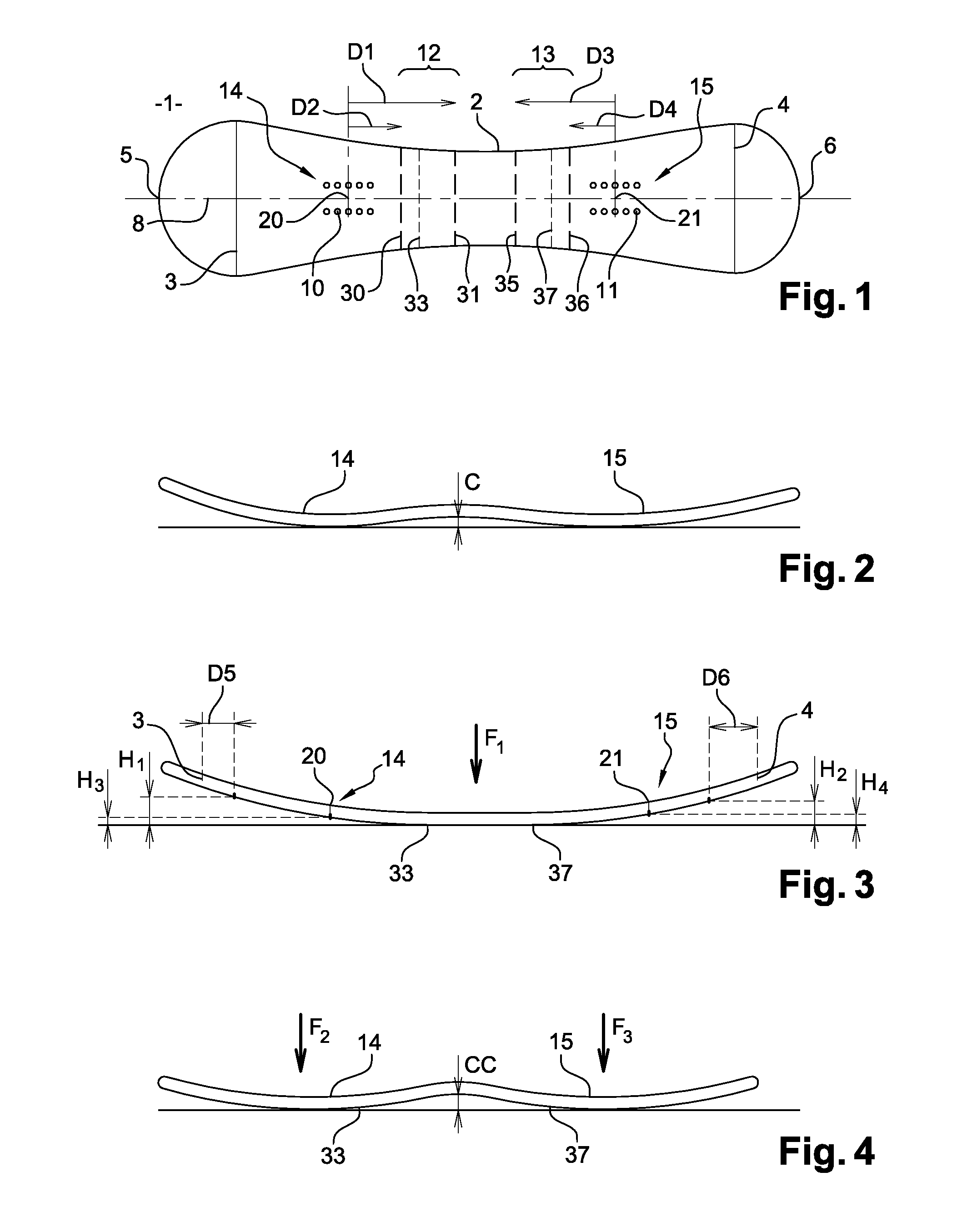Board for snowboarding
a technology for snowboarding and boards, applied in the field of boards for snowboarding, can solve the problems of remaining relatively difficult to maneuver on packed snow, and achieve the effects of reducing the intrinsic camber of the board, and reducing the length of the sidecut in conta
- Summary
- Abstract
- Description
- Claims
- Application Information
AI Technical Summary
Benefits of technology
Problems solved by technology
Method used
Image
Examples
Embodiment Construction
[0034]As shown in FIGS. 1 and 2, the sliding board 1 in accordance with the invention has a sidecut 2 whereof the portion coming into contact with the snow is of variable length depending on the tilt of the board relative to the ground surface. Said board 1 has two lines 3 and 4 where it has greater width, which may be identical or different between the front and the rear. These two lines may be at the same distance or at a different distance from the ends 5,6 of forward and rear shovels respectively.
[0035]As shown in FIG. 2, the board has when at rest, i.e. non-laden, a camber (C), corresponding to the maximum height which separates the sliding running surface from a horizontal plane on which the board lies, a camber which is measured in practice substantially at mid-length between the two contact lines.
[0036]As shown in FIG. 1, the board 1 also comprises two binding-mounting areas 14,15. To be more specific, on each side, front and rear of the board, the board has a plurality of m...
PUM
 Login to View More
Login to View More Abstract
Description
Claims
Application Information
 Login to View More
Login to View More - R&D
- Intellectual Property
- Life Sciences
- Materials
- Tech Scout
- Unparalleled Data Quality
- Higher Quality Content
- 60% Fewer Hallucinations
Browse by: Latest US Patents, China's latest patents, Technical Efficacy Thesaurus, Application Domain, Technology Topic, Popular Technical Reports.
© 2025 PatSnap. All rights reserved.Legal|Privacy policy|Modern Slavery Act Transparency Statement|Sitemap|About US| Contact US: help@patsnap.com


